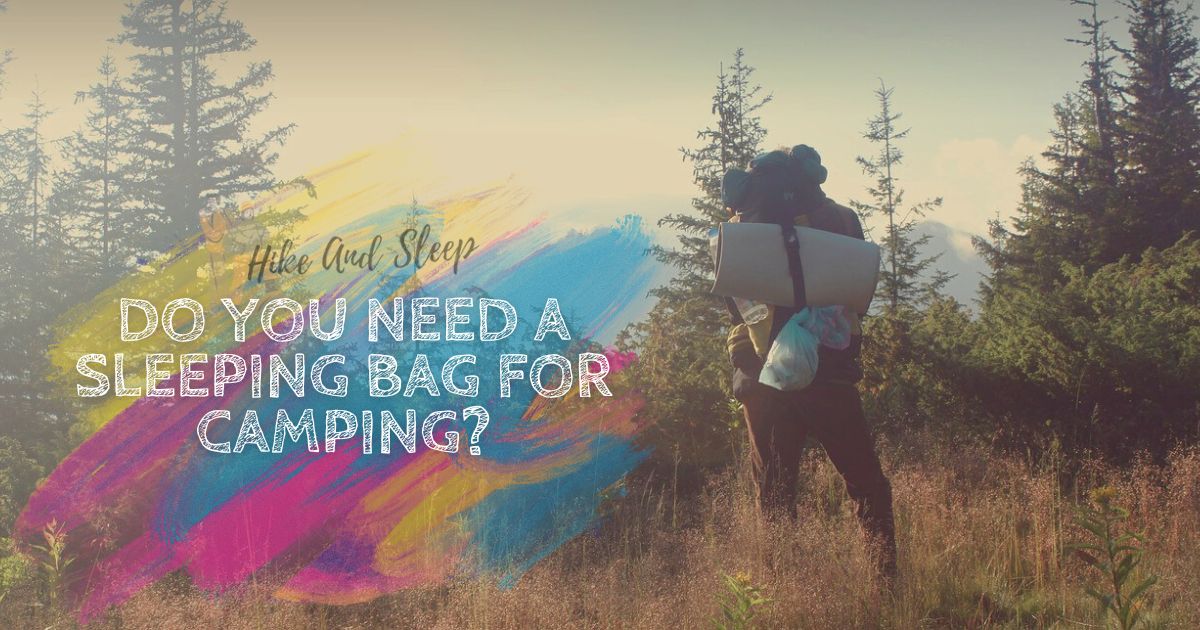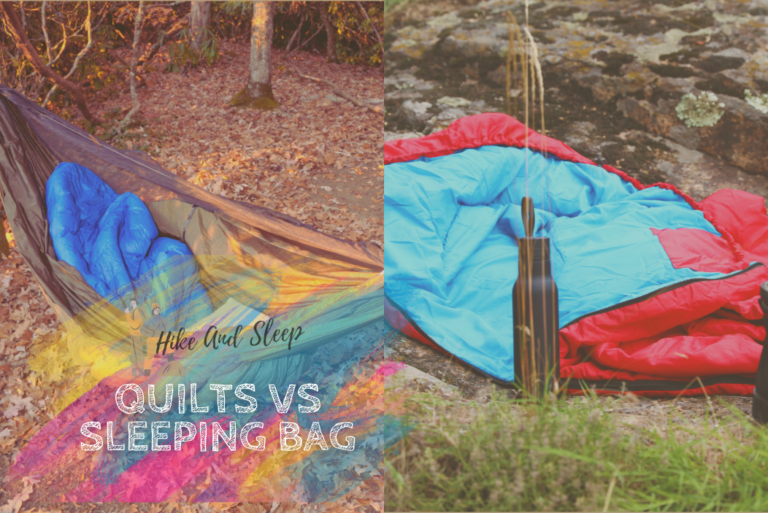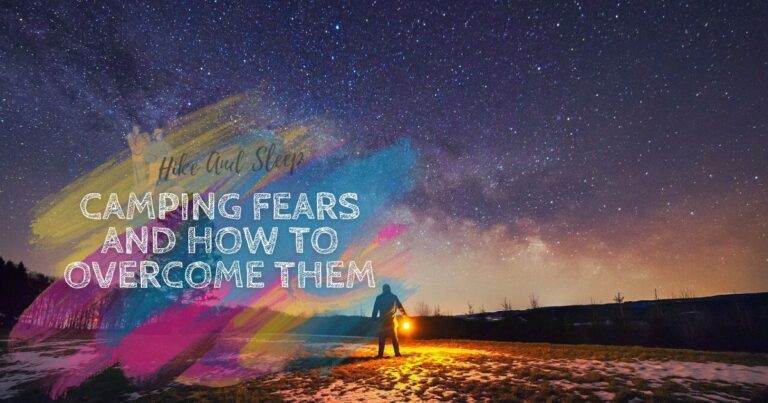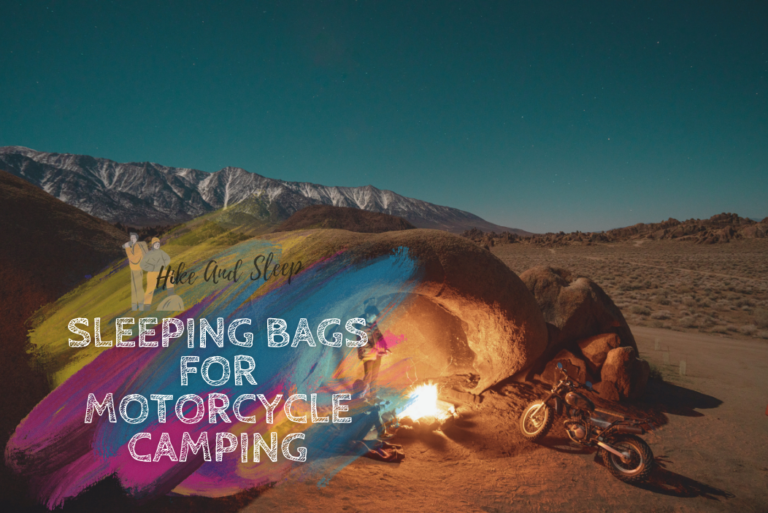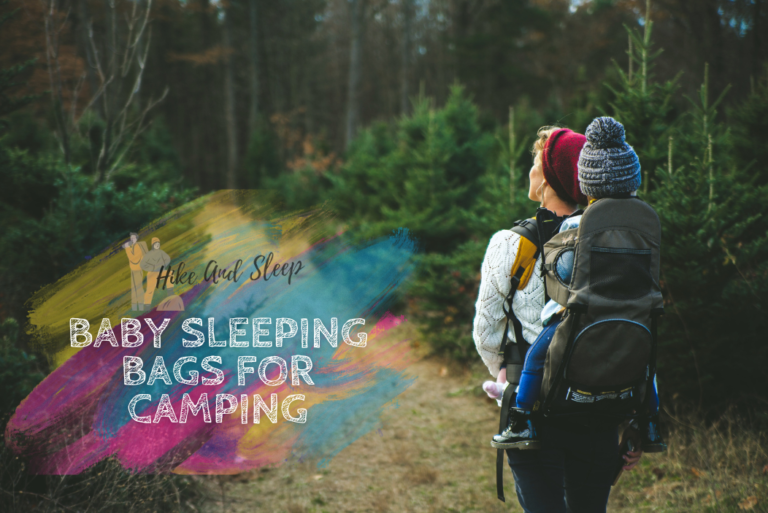Do You Need A Sleeping Bag For Camping?
When planning a camping trip, one of the essential items that often come to mind is a sleeping bag. It’s no secret that a good night’s sleep is vital for a successful outdoor adventure. However, you may wonder, do you really need a sleeping bag for camping?
It is generally a very subjective choice. Totally depends on the person who’s out hiking and camping. Do they prioritize sleeping in a sleeping bag or do they have better alternatives? If you go out on the internet looking for an answer, I bet you are not going to get one standalone fix to your question. Some say it is a valuable resource to carry along, some say it’s not “You’re totally going to find alternative ways to sleep comfortably”.
The question is, what suits you?
In this article, I am going to walk you through the uses of sleeping bags, the cons of having one, alternatives available, and tips on staying warm without one.
Maybe then you are able to decide whether you want to buy one for your next hiking trip or not!

Table of Contents
Do You Need A Sleeping Bag For Camping In Summer?
If you are camping with a sleeping bag during the summer months or in locations with warmer climates, the need for it might be less significant. In such conditions, the nights are usually milder, and a lightweight sleeping bag or even a sleeping bag liner could suffice.
Mild Weather Conditions
In cases where you expect mild weather conditions, such as during spring or autumn, you might opt for alternatives to a full-fledged sleeping bag. This flexibility allows you to pack lighter and still enjoy a comfortable night’s sleep. Don’t worry, I have compiled some alternatives for your help.
Sleeping Bag Uses
Sleeping bags are versatile camping gear and serve various purposes beyond simply providing a place to sleep. Let’s explore some of the common uses of sleeping bags:
Camping
Sleeping bags are the go-to choice for most campers. They offer convenience, warmth, and a cozy retreat after a day of outdoor activities. Whether you’re camping in a tent, under the stars, or in a camper van, a sleeping bag provides a familiar and comfortable sleeping space.
Hiking and Backpacking
For hikers and backpackers, minimizing weight and maximizing efficiency are key factors. Ultralight sleeping bags are designed with these needs in mind, providing warmth without adding unnecessary bulk to your pack. They are compact, lightweight, and easily fit into backpacks, making them ideal for long treks and multi-day adventures.

Outdoor Adventures
Sleeping bags are not limited to camping trips alone. They can be useful for other outdoor activities such as fishing, hunting, or even attending music festivals. Having a portable and reliable sleeping bag ensures you’re prepared for any overnight adventure.
Demerits Of Sleeping Bags
While sleeping bags have their advantages, it’s essential to consider their limitations as well. Here are a few drawbacks associated with using traditional sleeping bags:
Bulkiness and Weight
One of the main disadvantages of sleeping bags is their bulkiness and weight. Carrying a heavy sleeping bag can be cumbersome, especially when hiking or backpacking long distances. It can take up a significant portion of your pack’s space and add unnecessary strain to your body.
Limited Mobility
Sleeping bags can restrict your movement during sleep due to their snug fit. This lack of mobility can be uncomfortable, particularly for individuals who tend to toss and turn throughout the night. If you prefer more freedom of movement, exploring alternative sleeping arrangements might be beneficial.
Temperature Regulation Challenges
Sleeping bags are primarily designed to keep you warm, which can pose challenges when camping in fluctuating temperatures. In warmer climates, they may cause overheating and discomfort, while in colder conditions, they might not provide adequate insulation. It’s essential to consider the anticipated temperature range and choose your sleeping gear accordingly.
Sleeping Bag Alternatives
If you find yourself in situations where using a sleeping bag is not ideal, there are alternatives available that offer different sleeping arrangements and advantages. Here are a few popular alternatives to consider:
Hammocks
Hammocks have gained popularity among campers and backpackers as an alternative to traditional tents and sleeping bags. They offer versatility, lightweight portability, and the unique experience of sleeping suspended between trees. Hammocks are particularly suitable for camping in warmer climates or areas with limited flat ground.

Camping Cots
Camping cots provide an elevated sleeping surface, keeping you off the ground and away from rocks, roots, or uneven terrain. They offer excellent support and can be more comfortable for individuals who prefer a firmer sleeping surface. Camping cots are relatively easy to set up and can be combined with sleeping pads or insulated blankets for added warmth.
Air Mattresses
Air mattresses are a popular choice for car camping or when camping in areas accessible by vehicle. They offer a more bed-like experience, providing cushioning and insulation from the ground. Some air mattresses are designed specifically for outdoor use and are equipped with insulation to retain warmth.
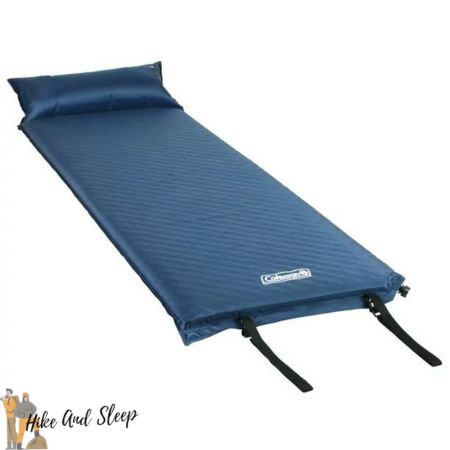
Synthetic Blankets
Synthetic blankets are lightweight, versatile, and excellent alternatives to traditional sleeping bags. They are often made from advanced materials designed to provide insulation, moisture-wicking properties, and durability. Synthetic blankets are versatile, moisture-resistant, and easy to maintain.
Top Quilts
Top quilts are another popular alternative to sleeping bags, particularly among hammock campers and lightweight backpackers. As opposed to traditional sleeping bags, they offer several advantages, including freedom of movement, weight, packability, and cost.
Sleeping Bag Liners
Sleeping bag liners are lightweight, compact sheets that can be used inside a sleeping bag or as standalone bedding in warm weather. The comfort level is much more enhanced with temperature regulation. For those who are conscious about hygiene, sleeping bag liners are a go-to for them.
Thermal Bivy Sacks
Thermal bivy sacks, also known as emergency bivy sacks, are lightweight shelters that provide essential protection in emergency situations or as an alternative to traditional sleeping bags. A thermal bivy sack is useful in emergency situations, has ultralight backpacking, and provides extra insulation.
How to stay warm Without A Sleeping Bag?
In certain situations, you may find yourself without a sleeping bag, and maybe you decide not to carry one but are still in need of a comfortable and warm sleeping solution if the weather is really cold.
Here are some tips to help you stay warm without a sleeping bag:
Layered Clothing
Wearing multiple layers of clothing can help trap body heat and provide insulation. Start with a base layer made of moisture-wicking material, add insulating layers, and top it off with a weather-resistant outer shell. This layering system allows you to adjust your clothing according to temperature changes throughout the night.
Using Insulated Sleeping Pads
Insulated sleeping pads offer an additional layer of insulation between your body and the ground. They provide cushioning and prevent heat loss to the cold ground, helping you stay warm and comfortable during sleep. The experts have designed some sleeping pads that are specifically for colder conditions and offer higher levels of insulation.
Employing Hot Water Bottles
A simple yet effective way to add warmth to your sleeping setup is by using hot water bottles. Fill a durable water bottle with hot water before bed, secure the cap tightly, and place it inside your sleeping bag or at the foot of your sleeping area. The heat from the water bottle will radiate and help keep you warm throughout the night.

What to wear in a sleeping bag
Choosing the right clothing to wear inside a sleeping bag can significantly impact your comfort level. Consider the following tips for optimal sleepwear:
Base Layer Clothing
Opt for moisture-wicking base layer clothing made of materials such as merino wool or synthetic fabrics. These fabrics help regulate body temperature by wicking away sweat and keeping you dry. Avoid wearing cotton as it retains moisture and can make you feel cold and clammy.
Socks and Headwear
Wearing a pair of clean, dry socks can help keep your feet warm inside the sleeping bag. Additionally, consider wearing a warm hat or headwear to prevent heat loss through your head, which is a significant source of heat loss for the body.
Avoid Overheating
While it’s crucial to stay warm, it’s equally important to avoid overheating. Overheating can cause excessive sweating, leading to damp clothing and discomfort. Adjust your clothing layers and ventilation options within the sleeping bag to find a comfortable balance.
Conclusion
While a sleeping bag is a common and reliable choice for camping, its necessity depends on various factors such as the weather, location, and personal preferences.
Understanding the pros and cons of sleeping bags, exploring alternative sleeping arrangements, and employing strategies to stay warm without a sleeping bag can enhance your camping experience. Remember to consider the specific conditions of your camping trip and choose the sleeping gear that best suits your needs.
I think, after properly analyzing, the decision of camping with or without a sleeping bag should be fairly easy.
So, do your research and decide before your next trip. Happy Hiking and Camping!
Read Also: How to wash sleeping bags in a washing machine
FAQs
Do you need a sleeping pad and sleeping bag for camping?
When it comes to camping, you got to have a sleeping bag and a sleeping pad. Let me tell you why. A sleeping pad provides insulation and cushioning between you and the ground, which helps to keep you warm and comfortable throughout the night.
Can you sleep outside without a tent or sleeping bag?
Sure you can! Sleeping outside without a tent or sleeping bag is known as “roughing it” or “sleeping under the stars.” It can be an adventurous and unique experience. However, it’s important to consider the weather conditions and temperature before attempting this. Without a tent, you’ll be exposed to the elements, which means you might get wet if it rains or feel colder without any insulation. A sleeping bag provides warmth and protection, so if you choose to sleep without one, make sure the weather is mild and suitable for such an experience.
What is the difference between camping and hiking sleeping bag?
While camping and hiking sleeping bags serve the same purpose of keeping you warm while sleeping outdoors, there are some key differences between them. Camping sleeping bags are generally designed for comfort and are suitable for car camping or camping at established campgrounds. They tend to have more insulation, providing better warmth and comfort during colder nights. On the other hand, hiking sleeping bags are designed with a focus on being lightweight and compact, as they need to be carried in a backpack for long distances. They prioritize being lightweight while still providing adequate warmth for backpacking adventures. So, the main difference lies in the weight, packability, and insulation levels of the two types of sleeping bags.
Do I need a sleeping bag for tent camping?
Yes, I do highly recommend you to have a sleeping bag for tent Camping. Even though a tent provides some insulation and protection from the elements, a sleeping bag is essential for keeping you warm and comfortable throughout the night. The ground can still be cold, and temperatures can drop during the night, so a sleeping bag acts as your personal cocoon of warmth inside the tent. It helps to trap your body heat and provides insulation against the chilly air. So, don’t forget to bring a cozy sleeping bag when you go tent camping!

